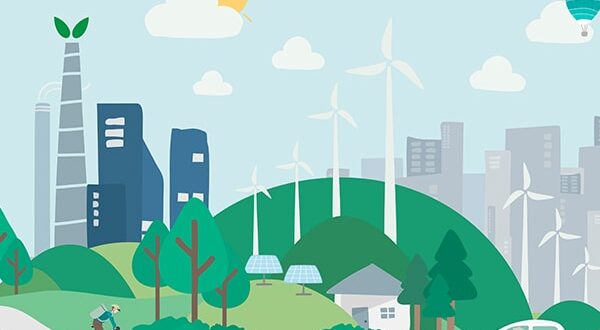As India’s urban landscape grows rapidly, the challenge of maintaining clean air intensifies. In Mumbai, the bustling heart of India, a major concern in the city is its air quality index as it reaches alarming levels, posing a significant threat to public health. Amidst the gloomy scenario, the Bhendi Bazaar redevelopment project shines as a beacon of hope. The ambitious project, which aims to revitalize the historic neighborhood, is adopting a sustainability-focused approach that prioritizes improved air quality. This initiative spearheaded by the Saifee Burhani Upliftment Trust (SBUT), is not just transforming the cityscape; but also, actively prioritizes clean air, offering a potential for sustainable urban development in the face of air pollution.
The quality of our air is deteriorating due to several factors, including changing weather patterns, festive celebrations (fireworks), and vehicle discharge. This is causing breathing difficulties, especially for people with respiratory problems such as asthma.
Recognizing the importance of clean air for the health and well-being of residents and workers as well, the project has incorporated several innovative air pollution control methods. These measures provide a bright example for future building projects to follow, demonstrating a dedication to responsible redevelopment.
1) Sprinklers for Dust Pollution
To combat dust pollution, sprinklers above the barricades on the project’s boundaries have been installed. These sprinklers regularly disperse water mist, successfully decreasing dust particles that might otherwise be blown by the wind affecting neighboring locations. This simple yet effective solution decreases the quantity of dust emitted into the environment.
2) Real Time Monitoring System and Anti-Smog Guns
An Air Quality Monitoring system has been strategically placed in the construction sites of both the sectors- Al-Ezz and An-Nasr. This system frequently analyzes the Air Quality Index (AQI) in real time, giving useful data to the team so that they can make informed decisions about dust management strategies. By actively monitoring and responding to the changes in the air, this minimizes the impact on the surrounding community. Three Anti-Smog Guns have been installed in the construction zone, two of them have been stationed at the construction site for both sectors, with an additional one dedicated to controlling the dust near the road area. These powerful machines use water mist to remove and eliminate dust particles before they can spread. This technology is particularly effective in controlling dust generated by heavy machinery and construction activities.
3) Covered Trucks: Minimizing Dust During Debris Removal
Construction debris is regularly collected and covered with green netting before being transported off-site. This simple measure prevents dust particles from escaping into the air during the transportation process. Additionally, the trucks used for the debris removal are also covered with green netting, ensuring comprehensive dust control throughout the waste management process.
4) Barricades: Keeping the Dust Contained/ Barricades for Containment
Barricades have been put together around the entire construction site since the project’s inception. These barricades help contain the dust within the designated construction area preventing it from spreading. This not only protects the surrounding community but also ensures the construction process remains uninterrupted by dust-related issues.
5) Maintaining a Clean Environment and Safe Workspace for the Workers
The team has also taken steps to protect the health and safety of its workers by providing them with safety goggles and masks. Throughout the building process, this protective equipment helps to protect workers from inhaling dust particles and ensures their well-being throughout the construction process. All roads encircling the construction are actively watered and cleaned to get rid of the dust particles and debris that gets accumulated. This consistent cleaning regime ensures that the immediate vicinity of the construction area remains clean and free of dust pollution.
Overall, the Air Quality Index (AQI) in Mumbai continues to remain a cause of concern. These initiatives are not merely symbolic gestures; they prove a firm commitment to protecting the environment. The Bhendi Bazaar Development Project is intended not just to change the physical landscape of Mumbai, but also to give its inhabitants a better and greener future. Looking ahead this project serves as a model for responsible development in the construction and real estate industry. The project will be an important example for larger building projects in India and around the world by being active on-air quality issues. By proactively implementing innovative air pollution measures we can establish a benchmark for sustainable and eco-conscious development.
 Business Sandesh Indian Newspaper | Articles | Opinion Pieces | Research Studies | Findings & News | Sandesh News
Business Sandesh Indian Newspaper | Articles | Opinion Pieces | Research Studies | Findings & News | Sandesh News



